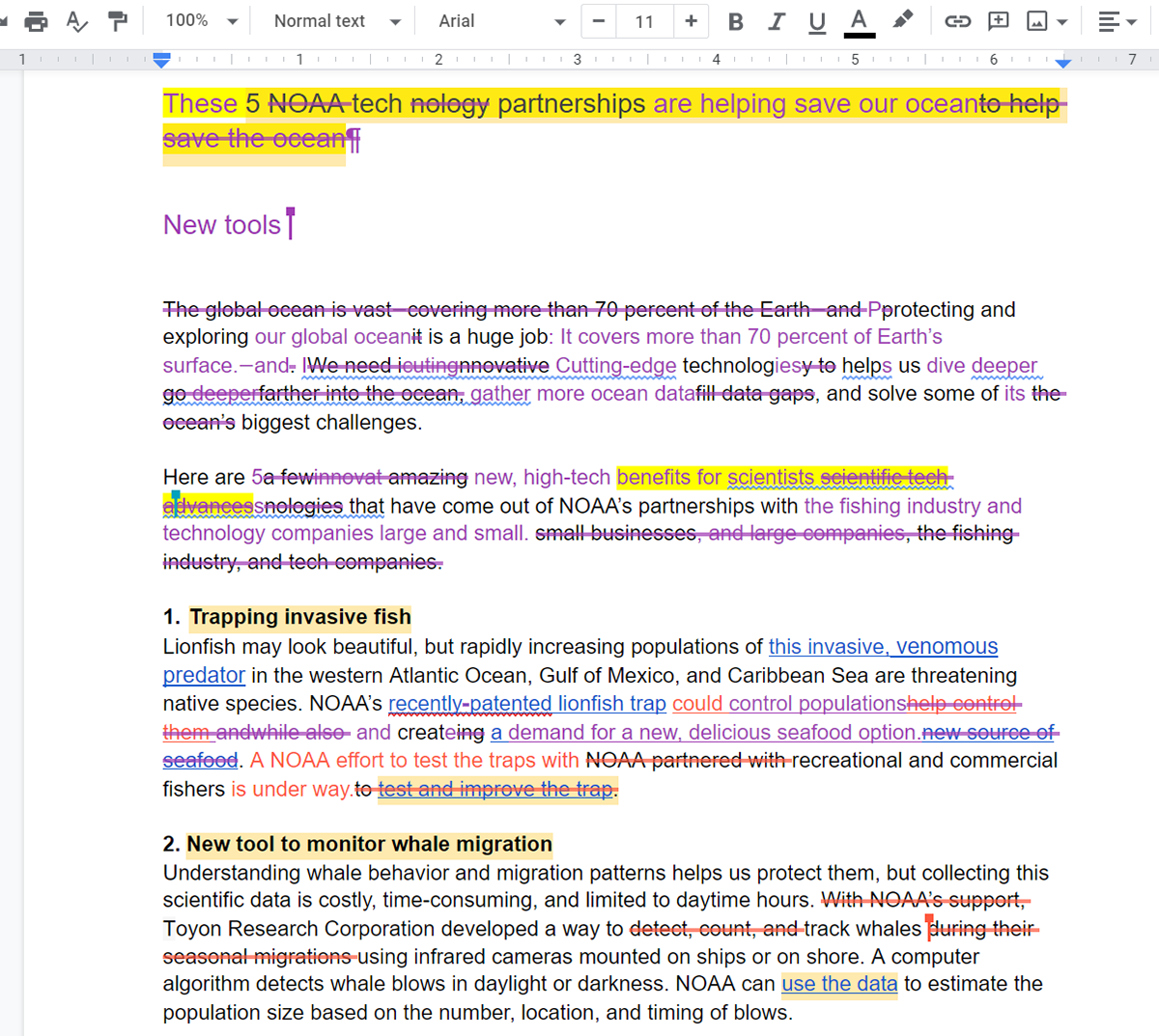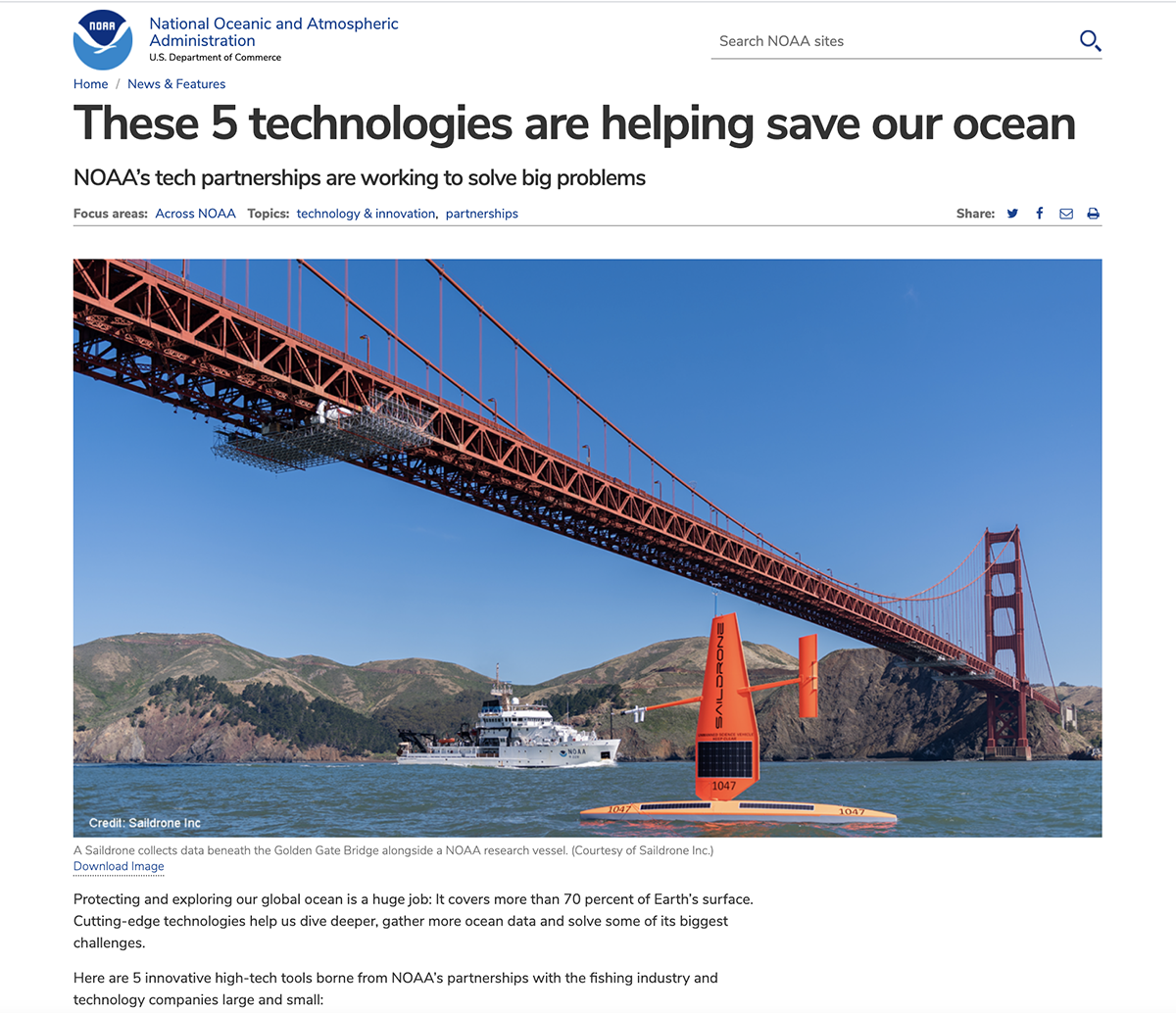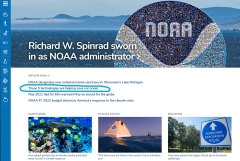Knauss legislative fellowships in Congress help build careers — and they're fun and educational. See our video and fact sheet for details.
Sharing Science Stories: Tips to communicate better and draw a larger audience
My colleagues at the National Oceanic and Atmospheric Administration (NOAA) do important work and it is my job to make sure that others know about it. When I started my Knauss fellowship in NOAA’s Technology Partnerships Office, I was excited to be the first person in my office to focus on outreach and communications. On my first day, I met with my supervisor on a video call and he sent a link in the chat box: www.noaa.gov. With a smile, he said, “Let’s see how many stories you can publish here.”
I’m still not sure if he was joking. My office had never published an article on the agency’s homepage before, and I did not know where to start or who to even ask! But I felt motivated and inspired. With the help of some networking, I gradually learned a bit more about the world of communications at NOAA. Finally, it was time to write.
In celebration of National Ocean Month, I chose to write about five technologies that help save our ocean. I tried to be very mindful in choosing a suite of examples that was representative of the wide diversity of technology partnerships that my colleagues and I help facilitate at my office. I also wanted the chosen examples to be reflective of the variety of ways that innovative technology benefits ocean ecosystems, coastal communities, and blue economies. I organized the story as a numbered list, or “listicle,” because that type of story tends to be more accessible for a broad audience and therefore more likely to be published on a high-traffic public-facing website. It was very important that each technology also had one high-quality photo to accompany the text, so for each image that I chose, I contacted the photographer to ask for their permission to publish their photo as part of my web story, with attribution.
After submitting my draft, I was surprised that the editing process was extremely collaborative.

I had the privilege of working with professionals in the NOAA Office of Communications, as well as in the Office of Public and Constituent Affairs within NOAA. I learned so much from my conversations with them and from lurking on the shared Google Docs file while their team edited my work. Together, we transformed my original draft into a polished piece.
It was a bit surreal to see my story online–sandwiched between big-time announcements about NOAA’s freshly-appointed administrator, the newest national marine sanctuary, and the recently-released budget! My colleagues in the Technology Partnerships Office were thrilled to see their work featured for the first time.
Writing the article and working with NOAA communicators reminded me that there is always more to learn about communicating science effectively. Here are 10 of the communicators’ tips for sharing science stories with a broad audience:
- Keep the audience in mind to better understand what messages will resonate. Tailor the text so it is not only informative, but also interesting and relevant for the reader. First, determine the purpose of your writing‒ what are you hoping to accomplish by writing this piece? Next, shape your style and tone (e.g. word choice, sentence structure, level of formality) so that your writing captures and keeps your audience’s attention.
- Use plain language—avoid jargon, use shorter sentences, and write with clarity. According to the communications experts, the text should be “accessible to people who have different ways of engaging with information.”
- Order matters. Present the key points early and provide more context and details later. Share the most important details first because attention spans are short and people do not always read to the end.
- Try using anecdotal ledes. Consider starting the article with a short story to “peg it to a person.” This pairs interesting personal information with core science messages and helps readers get invested in the whole story.
- Keep it short! The communications experts advise that “every word in every sentence should have a purpose. If it doesn’t, take it out!”

The author’s article, as published on NOAA.org. Credit: Screen capture from NOAA website - Incorporate hyperlinks as a way to layer the text with opportunities to get more information. That way readers can get more information if they want it.
- Write as if having a conversation with another person. Read sentences out loud and re-write anything that sounds unnatural. The text should be something that people want to read in their free time.
- Craft compelling headlines. A strong title “makes all the difference in whether or not people click on your story,” according to the communications experts. Titles should be dynamic (use a verb!) and show impact.
- A picture is worth a thousand words. It is cliché, but it is true nonetheless. People are visual beings. Every story needs at least one compelling photo, and more are preferable. Always confirm that you have permission to use the image and provide appropriate attribution. Make sure photos are licensed as Creative Commons, and follow the attribution rules of their license, or reach out to photographers directly to obtain permission. Let them know where you want to publish their image, in what context the photo will be presented, how they will be credited for their work, and if you have a budget for any licensing fees. If they provide permission, be sure to obtain written consent.
- Writing is not an individual practice; it is a team sport! The experts told me that “everybody needs an editor.” That includes professional communicators, as well as those writing for the first time.
Bonus tip: Remember that writing is only the first part of sharing science; it is also important that people actually read your work! Ask your contacts to promote the article across different online and social media platforms so that different audiences will see the story.
Photo, upper left: My article as it was featured on NOAA’s homepage. Photo credit: Screen capture from NOAA website
See all posts to the Fellowship Experiences blog



